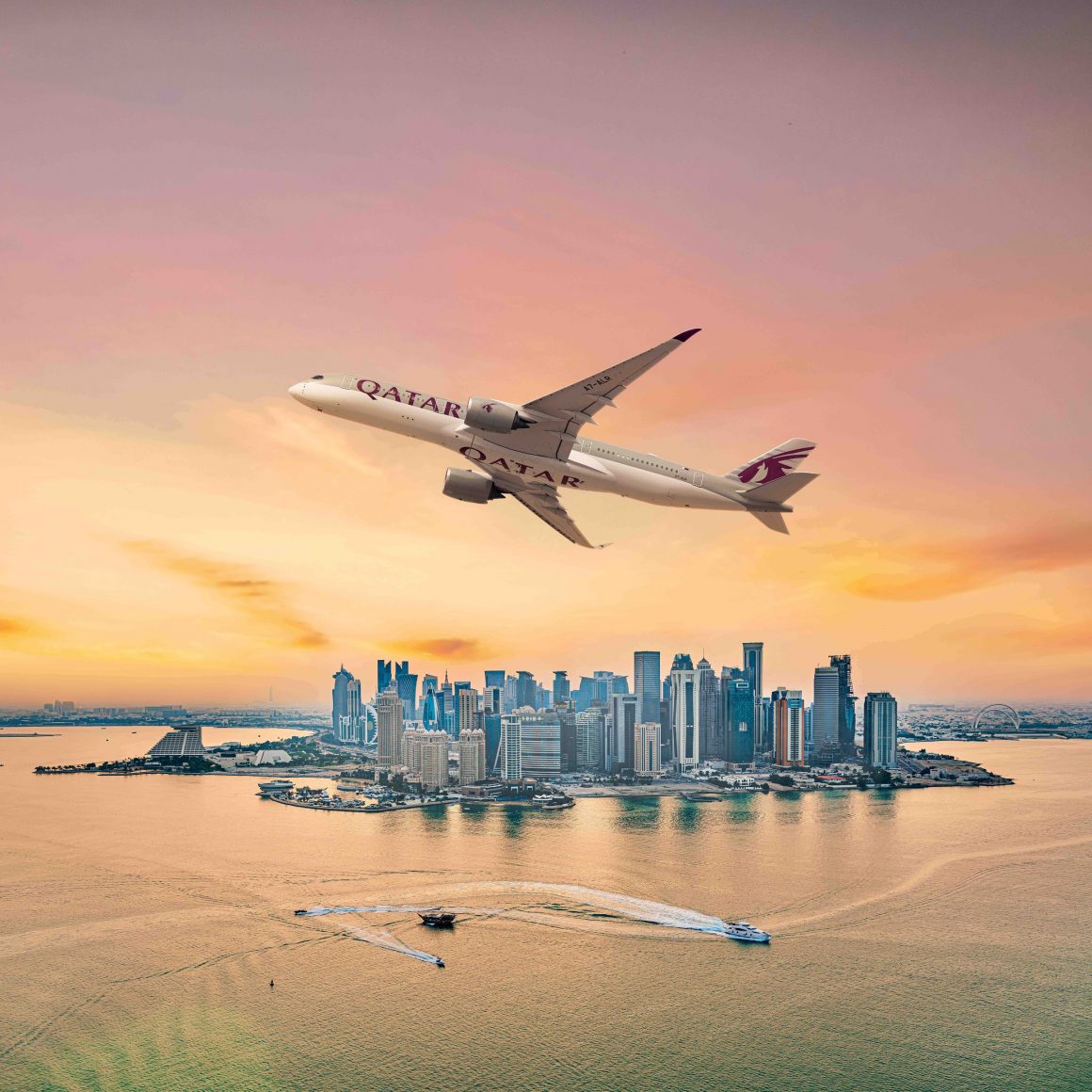The approved dimensions of Qatar’s new airspace allows the country to take control of an area of the skies for the first time in history.
In a historic verdict for aviation in the Middle East, the UN special agency for aviation “ICAO — the International Civil Aviation Organization” has agreed to establish a brand new, first-ever airspace for the State of Qatar known as the “Doha FIR” — redrawing the skies of the world’s airspace map for the first time in decades.
The ICAO is the UN agency with the authority to delegate which country is responsible for the operational control of a given ‘flight information region’, which is known in the industry as an ‘FIR’ – essentially, an airspace area on the map of the skies.
What does this mean for the region’s airspace?
The establishment of a Doha FIR shrinks Bahrain’s existing airspace, and stretches out east towards the UAE, and north towards Iran. The Doha FIR was approved by ICAO council member countries, which include the United States, South Africa, Singapore, Greece, and Gulf neighbours Saudi Arabia and the United Arab Emirates.
Following a process that’s ultimately taken several years, ICAO agreed in the final hearing of the matter that the Doha FIR shall be established in two phases.
In the diagram below, “Area A” of the Doha FIR is an ‘unlimited altitude’ area to be controlled by Qatar. Initially, “Area B” will be controlled to an altitude of 24,500ft. Within 2 years, Area B will join Area A in becoming an unlimited altitude area.
As I exclusively revealed on Twitter today, ICAO’s summary of decisions delivers a final verdict on the “establishment of the Doha FIR” and includes “revised dimensions of Bahrain FIR.”
The decision is unprecedented in the world of commercial aviation, given there are no examples in modern history of the airspace map of the world changing to include a country that had no airspace (FIR) of its own.
As Bahrain airspace shrinks, Qatar will take on a flow of traffic that can at times be the busiest in the world. Approximately 70% of flights to the United Arab Emirates will fly through the new Qatari airspace.
The area is also busy with other foreign jets overflying the Gulf to journey to and from Asia — many do so because other routes above Ukraine and Afghanistan are mostly off limits given recent conflicts.
Read more: What does the ICAO’s decision mean for Qatar’s airspace?
How does Qatar benefit from this?
With a new FIR of its own, Qatar will gain much-needed airspace independence, and the country will have the ability to maximise the efficiency of air travel around Qatar in order to better meet the country’s air travel sustainability goals. Qatar will further benefit from overflight fees paid by other airlines for using its airspace – which is common practice in aviation.
The decision follows ICAO’s conclusion in June 2021 when it “agreed on a Doha FIR in principle.” The organisation has spent the time since the last hearing working with aviation industry stakeholders to determine what exactly a Doha FIR will look like.
For decades, the skies above the Middle East have been disproportionally divided. Whilst most regions on earth have airspace split up equally among countries, airspace in the Gulf is unusually shaped.
Bahrain, the smallest of all Gulf states, has held control of most of the airspace above the Gulf with its ‘Bahrain FIR’ that stretches from Kuwait, across the Gulf, to the bordering FIR of the United Arab Emirates.
The decision for Bahrain to retain control of most of the skies above the Gulf dates to when Bahrain gained its independence from Great Britain in 1971.
Airspace in the region had previously been determined based on where military radars had been installed, and with a history of good, ‘brotherly’ relations between Qatar and Bahrain, (and both being Gulf Council Corporation countries, and being members of ICAO’s Transit Agreement, which permits freedom of the skies), Qatar had agreed for Bahrain to continue to control and manage its disproportionally large area of airspace.
Back then, it was also acknowledged that Bahrain would continue to profit from overflight fees (the fees airlines must pay for passing through a country’s airspace) of one of the busiest transit areas in the world.
The GCC-blockade’s after-effects
In 2017, the sudden blockade on Qatar pushed the unusual distribution of airspace in the Gulf into the spotlight for the very first time. Whilst the UAE, Saudi Arabia and Egypt joined Bahrain in announcing the immediate closure of their airspaces to all Qatari registered aircraft (found later to be a breach of ICAO’s Chicago Convention), the announcement of the closure of Bahrain’s airspace had been the most critical for Qatar.
Recognising the risk of having skies controlled by another country, in 2018 Qatar accelerated its formal proposal to the ICAO for the establishment of its airspace in what would become known as the Doha FIR.
Following years of technical assessments, hearings and council sessions, the organisation’s council has worked with technical teams to draw the coordinates of a Doha FIR and has agreed on its establishment.
Reflecting on the milestone verdict, Qatar’s Minister of Transport Jassim Saif Al-Sulaiti appreciated the efforts of the ICAO Council in this regard and thanked the stances of the member states who approved Qatar’s proposal, all which contributed to setting out a full plan for its implementation.
Alex Macheras is an aviation analyst, broadcasting and discussing the world’s aviation news on leading international news networks, including BBC News, Sky News, Al Jazeera, ITV, CNN, LBC, and Good Morning Britain.
Follow Doha News on Twitter, Instagram, Facebook and Youtube
